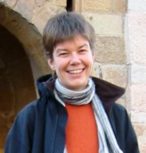DNA reveals the past and future of coral reefs
New DNA techniques are being used to understand how coral reacted to the end of the last ice age in order to better predict how they will cope with current changes to the climate. James Cook Univer

From 2005 to 2022, the main node of the ARC Centre of Excellence for Coral Reef Studies was headquartered at James Cook University in Townsville, Queensland (Australia)








Abstract:
Over the last decades, the lowlands of Jambi province in Sumatra (Indonesia) have undergone a major transformation from forests towards a cash crop-dominated landscape of rubber and oil palm plantations. EFForTS is a collaborative project of more than 160 researchers that investigate the ecological and socio-economic effects of such transformation focusing on smallholder systems. The goal of the project is to understand and possibly find ways how to support biodiversity and ecosystem functioning while serving human needs. Here, I will give some general background on the project and then focus on EFForTS-ABM, an integrated ecological-economic land-use change model. EFForTS-ABM is spatially-explicit and follows a combined agent-based and grid-based approach. Household agents own agricultural fields within a forested landscape and take economically-driven farming decisions that affect diverse ecological and socio-economic functions. EFForTS-ABM is equipped with EFForTS-LGraf, a landscape generator that not only generates input maps for EFForTS-ABM, but serves also as a stand-alone tool for specific landscape-scale analyses. Model structure and parameterization are based on field data from multiple EFForTS projects. Our guiding question is what kind of landscape mosaic optimizes the ensemble of biodiversity, ecosystem functioning, and economic benefit.
Biography:
My interests revolve around spatial ecology, biodiversity, as well as ecological-socioeconomic land use systems. My first project was a population viability analysis of an Australian gecko species. In the last 20 years, my work has broadened to savannas, forests, grasslands, and agricultural landscapes. My methodological emphasis is on (spatially explicit, individual-based) simulation models and spatial statistics (point pattern analysis, of location of individuals). After having worked at a range of universities and research institutes across Germany, USA, and Israel, I’m professor for ecosystem modelling at the University of Goettingen (Germany) since 2009.
New DNA techniques are being used to understand how coral reacted to the end of the last ice age in order to better predict how they will cope with current changes to the climate. James Cook Univer
A new study on the effects of climate change in five tropical countries has found fisheries are in more trouble than agriculture, and poor people are in the most danger. Distinguished Profess
James Cook University researchers have found brightly coloured fish are becoming increasingly rare as coral declines, with the phenomenon likely to get worse in the future. Christopher Hemingson, a
Researchers working with stakeholders in the Great Barrier Reef region have come up with ideas on how groups responsible for looking after the reef can operate more effectively when the next bleaching
Abstract: As marine species adapt to climate change, their heat tolerance will likely be under strong selection. Individual variation in heat tolerance and its heritability underpin the potential fo
Abstract: The Reef Ecology Lab in KAUST’s Red Sea Research Center explores many aspects of movement ecology of marine organisms, ranging from adult migrations to intergenerational larval dispersal
Abstract: Macroalgal meadows are a prominent, yet often maligned component of the tropical seascape. Our work at Ningaloo reef in WA demonstrate that canopy forming macroalgae provide habitat for ad
Abstract: Sharks are generally perceived as strong and fearsome animals. With fossils dating back at least 420 million years, sharks are not only majestic top predators but they also outlived dinosa
Abstract: Connectivity plays a vital role in many ecosystems through its effects on fundamental ecological and evolutionary processes. Its consequences for populations and metapopulations have been
Abstract: Evolution of many eukaryotic organisms is affected by interactions with microbes. Microbial symbioses can ultimately reflect host’s diet, habitat range, and even body shape. However, how
Abstract: The past few years have seen unprecedented coral bleaching and mortality on the Great Barrier Reef (GBR) but the consequences of this on biodiversity are not yet known. This talk will expl